The 60th edition of the Venice Art Biennale has just opened to the public, and along with it, a swath of collateral exhibitions have enlivened seemingly every inch of every palazzo in the city. Here are the top ten things you should see if you’re visiting the historic Italian destination this season. (Or later—many exhibitions are on view through the fall; the Biennale itself is up until November 24th.)
WangShui’s installation at the Arsenale
Photographed by Nick Ash
Biennale curator Adrian Pedrosa was wise to kick off his show, titled “Foreigners Everywhere,” with the Mexican-born, German-trained artist Frieda Toranzo Jaeger, who in return has realized her most ambitious work to date—a killer polyptych that marries the Mexican muralist canon with big-boy German painting to forge a brand new vernacular all her own. This work shares the ambition of the Arsenale exhibition’s capstone, a room-swallowing installation by New York-based artist WangShui. As one of the only full blown installations in the main show, WangShui demonstrates their ability to wrangle our scattered attentions by blocking out large industrial windows with aluminum etchings, which at first appear to be a machine’s doing. Upon closer inspection, one recognizes that a hand has scratched these designs—barely legible thanks to pulsing tangles of LED lights. And it’s that tension between the technology’s limitations and the freneticism of WangShui’s Chauvet-esque scrawlings that feels so right now.
John Akomfrah, “Canto III Listening All Night To The Rain” at the British Pavillion, presented by the British Council.
Photographed by Jack Hems
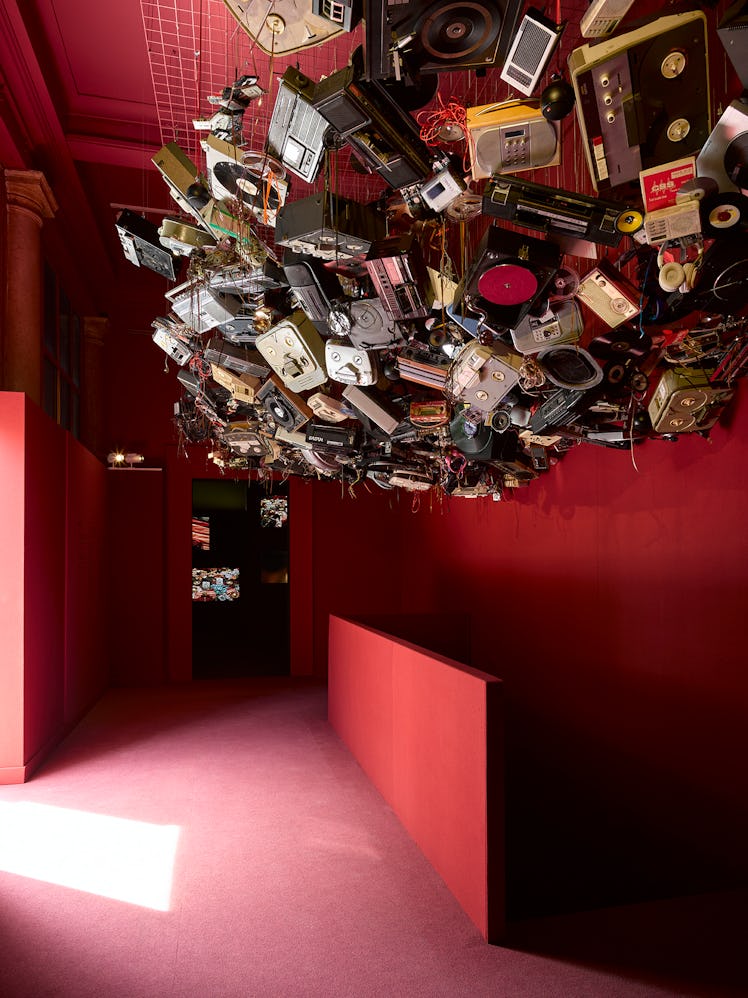
Sir John Akomfrah knows that the format of a biennial doesn’t lend itself to an hours long documentary, which is perhaps why the British artist saw fit to abandon his narrative style in favor of something more experiential—and it works. In fact it adds something new to his practice that feels fresh and full of future potential. The show begins in a basement, where Akramfoh throws you into the deep end, submerging you in a world of screens that connect visually and thematically the story of migrant diasporas in Britain through a series of watery images. Like past Akomfrah films, the videos on display mix archival finds with recently shot footage to create a new space where past and present collapse are no longer separated. Touching upon many of themes raised in Pedrosa’s biennial about indigenous identity and displacement, Akomfrah manages a more seamless experience that doesn’t require reading wall text to understand that all stories of colonization and mass death are actually part of one fluid storyline about power. In his pavilion, presented by the British Council, the truth rushes in.
Jean Cocteau, Orpheus’s Mirror (Miroir d’Orphée), 1960/1989, Gilded bronze, silver, and copper, 32 x 20 x 9 cm, Edition Artcurial 1/20. Collection Kontaxopoulos Prokopchuk, Brussels. Photo ©yankont@pt.lu © Adagp/Comité Cocteau, Paris, by SIAE 2024.
Courtesy of Adagp/Comité Cocteau, Paris, by SIAE 2024.
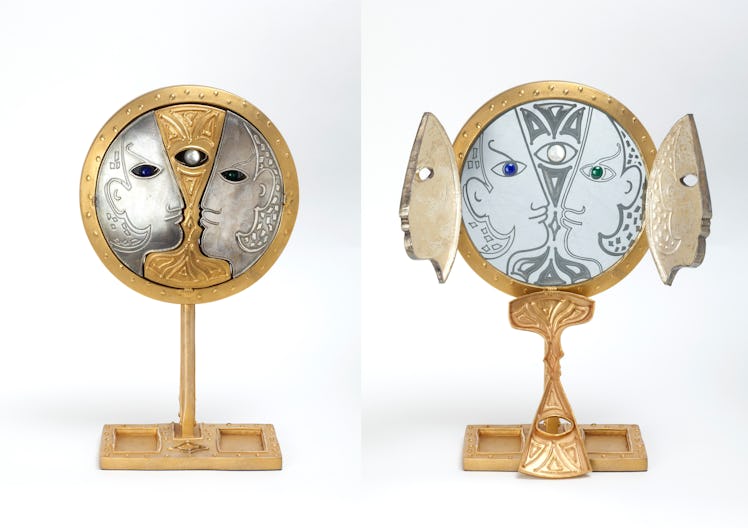
Once a regular guest of Peggy Guggenheim’s palazzo, Jean Cocteau now returns for a posthumous visit. Italy’s largest retrospective on the 20th century author and artist kicks off with a gut punch of a first room, pairing a gilded handheld mirror by Cocteau with a seminal Felix Gonzalez Torres piece. Both artworks take their names from the myth of Orpheus, who went to fetch his lover from death. In Gonzalez Torres’ work–a pair of identical floor length mirrors displayed side by side–the ancient story is called upon to capture the void left by losing one’s partner to AIDS. In Cocteau’s mirror, the reflective surface is almost entirely covered from sight by two masculine faces separated by this tiny infinity. This heart-stirring visual metaphor sets up the rest of the show to dig into the complications of Cocteau’s love life, which he was never able to fully disclose even within the avant-garde circles in which he was beloved.
Installation view of “Monte di Pietà,” a project by Christoph Büchel. Fondazione Prada, Venice.
Photographed by Marco Cappelletti, courtesy of Fondazione Prada
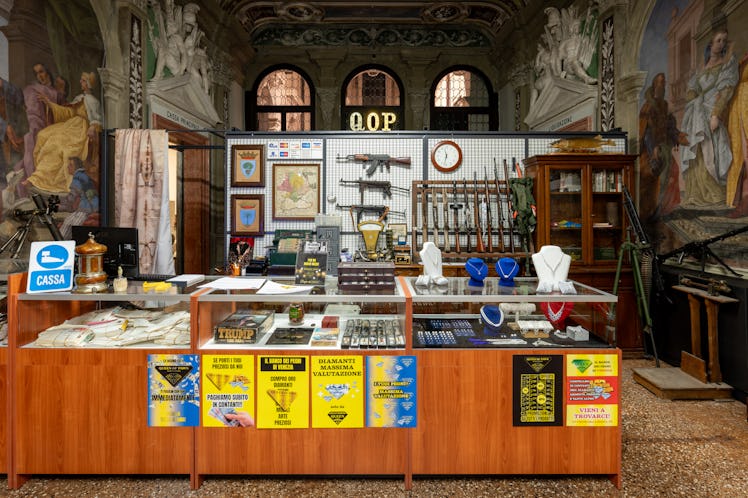
The confusion caused by the liquidation posters advertising Christoph Büchel’s takeover of the Fondazione Prada on the Grand Canal are just the tip of the iceberg when it comes to the disconcerting message at the core of this show. Love it or hate it, the Swiss artist’s exhibition is without a doubt the most out of pocket thing to see in Venice right now: a contemporary haunted house in which everything is all too real, from the rotting spaghetti to the ambiguous politics of live streaming active wars. Many visitors upon entering ask if they are in the right place, and by the end, are in search of the gift shop. There isn’t one to speak of, but perhaps it is just that kind of impulse—the desire to shop in order to belong—that is at the crux of Buchel’s impulse to transform a palatial seat of commercial power into an apocalyptic pawn shop.
Back in the depths of the Canareggio neighborhood, the last thing one might expect to find is a movie theater. And yet when you enter the Complesso della Ospedaletto, you will need to leave those assumptions behind. For the past two years, the Fondazione In Between Art Film has been working away to erect a highly-produced installation that gives emerging video artists the architecture they need to make you want to stay for the duration. Each artist has been given their own customized theater demarcated with marquee-like signs labeled one through eight. Laid out like an odyssey throughout the decommissioned retirement home and church, the works by emerging voices like Basir Mahmood and Cinthia Marcelle plumb the poetic and sometimes literal nature of the show’s namesake, Nebula. The final work, a darkly updated Pinocchio by Diego Marcon, was our highlight of the week.
F Taylor Colantonio, Frutti di Mare. Installation image.
Courtesy of Object & Thing
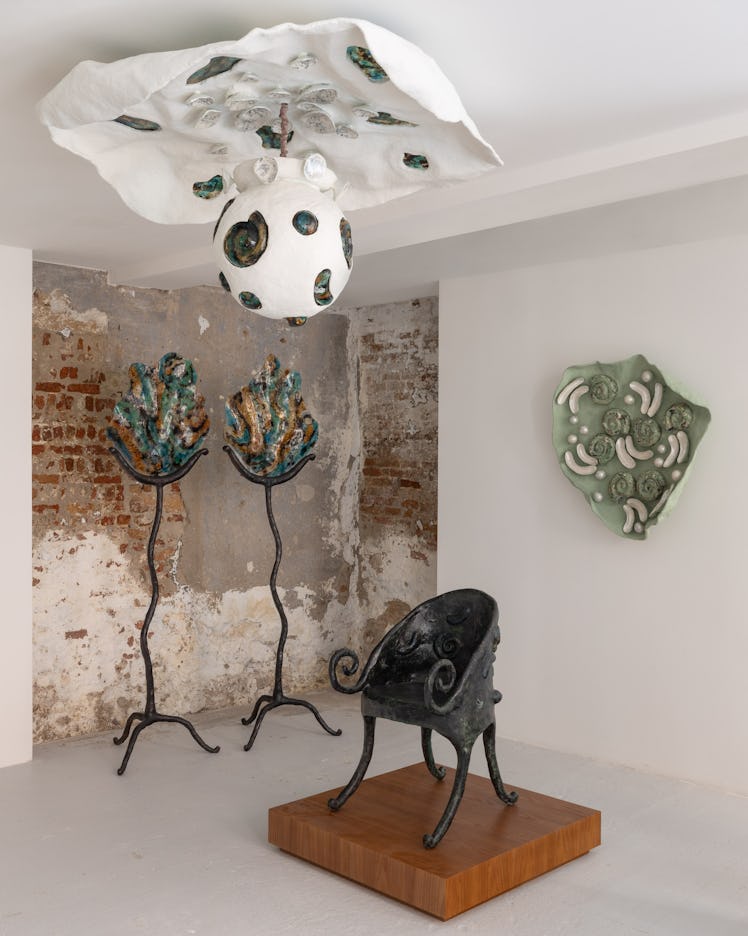
Tucked away in the same fashionable corner of Venice as the Palazzo Grassi, F Taylor Colantonio ’s latest exhibition, curated by Object and Thing’s Abby Bangser, is a small treasure chest bursting with material wonder. The show builds off the designer’s language of cartapesta and classical frills to introduce a new body of work that takes its cues from the lagoon. The centerpiece–a bronze throne fit for Poseidon–looks like it’s already spent centuries at the bottom of the sea, with fossilized nautilus shells adorning its blackened exterior. Our favorite addition to Colantonio’s vocabulary is the introduction of glass with a pair of standing candelabras that filter candlelight through technicolor panes, throwing stained-glass shadows across the room.
Pierre Huyghe, (from left to right) Offspring, 2018, Pinault Collection; Offspring, 2018, Courtesy Leeum Museum of Art. Installation view, “Pierre Huyghe. Liminal”, 2024, Punta della Dogana, Venezia. Ph. Ola Rindal © Palazzo Grassi, Pinault Collection
Ph. Ola Rindal © Palazzo Grassi, Pinault Collection
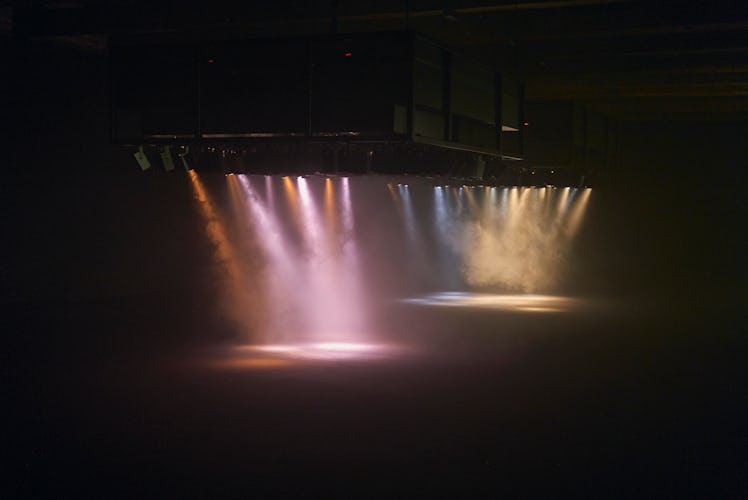
The docents at Punta Della Dogana won’t have to reapply much SPF this summer. The entire exhibition currently on view unfolds in the dark, transforming the usually light filled galleries into a disorienting odyssey. A welcome antithesis to the craft-forward biennial, this monumental retrospective of French artist Pierre Huyghe showcases the power that installation still has to thrill outside of the art market’s insatiable demand for painting. From deep sea fish tanks with asteroid like interventions to room devouring videos, Huyghe’s command of spectacle allows the artist to question whether we are really making progress towards some greater truth or just marching self-assured towards our own extinction.
Robert Indiana_ The Sweet Mystery, Installation View, Photo_ Marco Cappelletti, Artworks © Morgan Art Foundation LLC, Artists Rights Society (ARS), NY
© Morgan Art Foundation LLC, Artists Rights Society (ARS), NY

The biennial’s biggest surprise comes from an unlikely place: Robert Indiana, an artist who has unfortunately been pigeonholed by a middlebrow public art reputation. This posthumous show does the work to right this wrong, laying out a legacy of radically beautiful and adventurous works beginning with Indiana’s first years in Coenties Slip, a hallowed wisp of history on the docks of what has now been rebranded as New York’s South Street Seaport. It was here that Indiana, alongside other titans of the era like Agnes Martin and Ellsworth Kelly (his one time paramour), forged their own visual vernaculars. As this show proves, Indiana was the most engaged with this unique environment of industrial shipyards and broken boats—salvaging the detritus being left behind by the rapid development of this once working seafront and turning it into mythological charged sculptures and painted compositions. His famous “LOVE” typology only came after years of playing with references as vast as I Ching, New York’s ginkgo leaf season and his own queer love life.
Re-Stor(y)ing Oceania by Latai Taumoepeau.
Photographed by Giacomo Cosua.
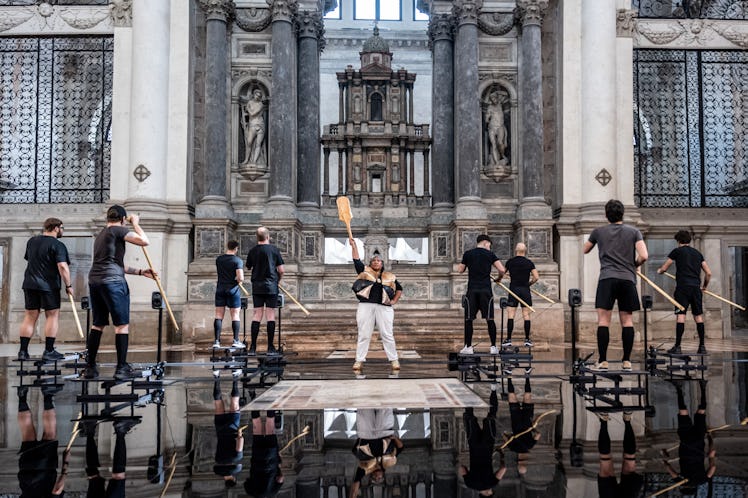
Edition after edition, Ocean Space remains a favorite respite for unique sonic experiences in Venice. This year doesn’t disappoint, thanks to artist Taloi Havini, who jumped into the position of curator for this special exhibition uniting the two Pacific-based artists Latai Taumoepeau and Elisapeta Hinemoa Heta. Taumoepau’s contribution, an interactive sound piece composed of standing paddling machines, invites visitors to lend their bodies and time to activating and amplifying a Me’etu’upaki, an ancient choral ritual recorded earlier this year that seeks guidance in ensuring the longevity and safety of the ocean. The more paddles at work, the larger the sound grows. We recommend trying your hand at paddling, or else waiting to visit when one of the local Venetian sports teams to drop in and swap their regular workout regime for this spiritually recharging performance.
Precious Okoyomon, Pre-Sky / Emit Light: Yes Like That, 2024 Installation view, Nigeria Imaginary at the Nigeria Pavilion at the 60th International Art Exhibition — La Biennale di Venezia Image: Marco Cappelleti Studio Courtesy: Museum of West African Art (MOWAA)
Image: Marco Cappelleti Studio Courtesy: Museum of West African Art (MOWAA)
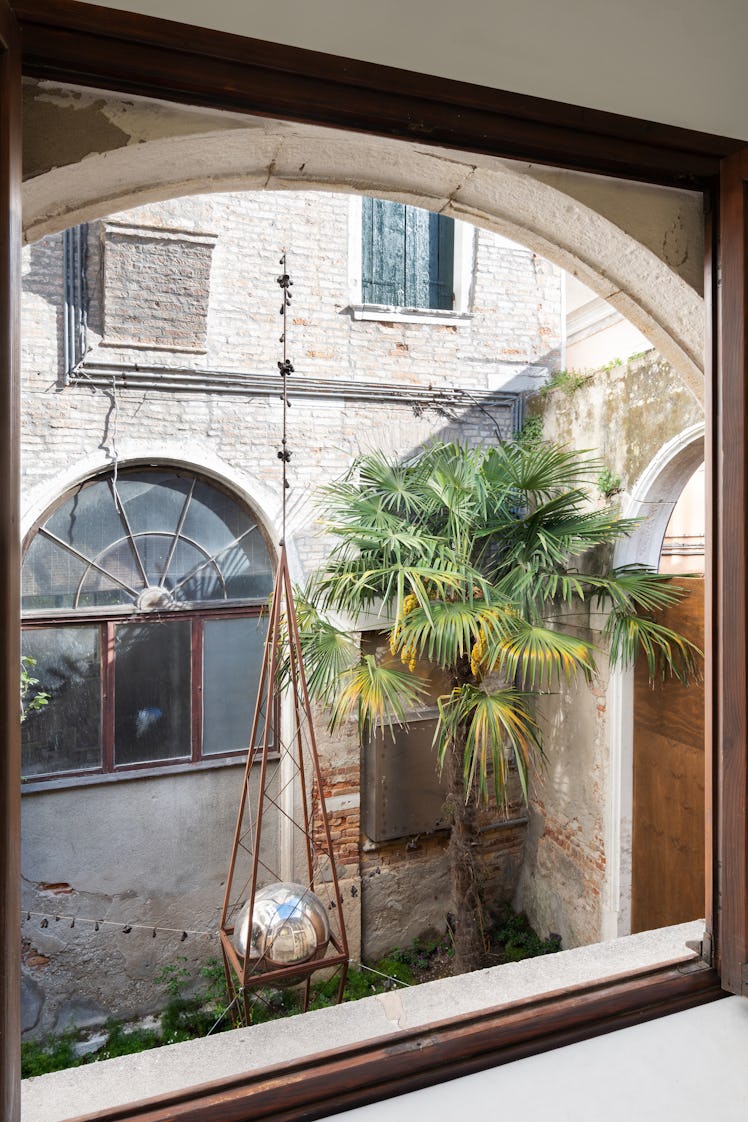
In its second edition, the Nigerian pavilion, an off-site space in Dorsoduro, was already creating buzz before it opened. The show unites the practices of a handful of world renowned artists including Toyin Ojih Odutola, Precious Okoyomon, and Yinka Shonibare CBE RA in the service of the soon-to-be-opened MOWAA (Museum of West African Art) in Lagos. The works on view now in Venice will inaugurate MOWAA’s opening next year. What makes their presentation here so enticing is the varied way in which they activate the abandon palazzo they occupy—taking over the ceilings, the gardens and the walls—to tell the stories of a Nigeria that has yet to come to fruition, including the recuperation of its pillaged Benin treasures and the amplification and recognition of its globally influential cultural heritage.
Wael Shawky Drama 1882, 2024 © Wael Shawky. Courtesy of Sfeir-Semler Gallery, Lisson Gallery, Lia Rumma, and Barakat Contemporary.
Courtesy of Sfeir-Semler Gallery, Lisson Gallery, Lia Rumma, and Barakat Contemporary.
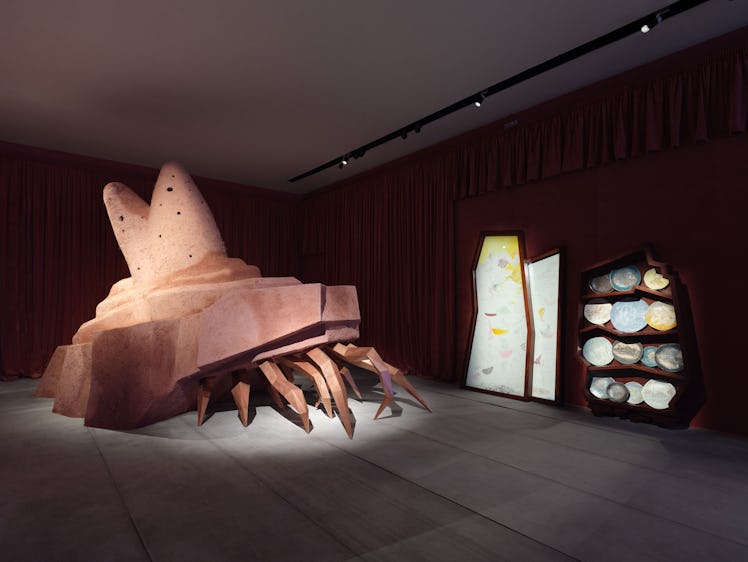
The refrain “Have you been to Egypt yet?” was the most overheard phrase in the Giardini during opening week. Wael Shawky made the country’s national pavilion a destination—and there were long lines to prove it. Shawky, who is known for his theatrical retellings of forgotten or underexposed histories, has reached a formal zenith with “Drama 1882,” an original musical devoted to celebrating the story of the unsuccessful nationalist Urabi revolution against Britain’s rule that lead to another 60 years of occupation. The movie itself has a twee flavor that reminded us of a Wes Anderson flick—and it was this clash of a charming aesthetic with the bloody reality of the story that seemed to keep people in their seats for the duration of Shawky’s filmed performance. The movie also spilled into the room in the form of related props and sculptures that gave body to the horror of an indigenous culture crushed and reconstituted by blind and unrelenting imperial force, and the resilience of those who must live on anyway.
